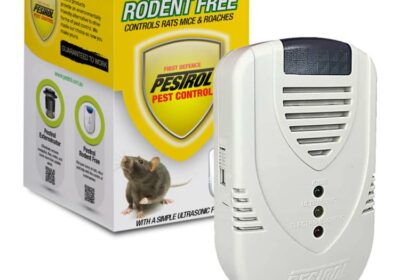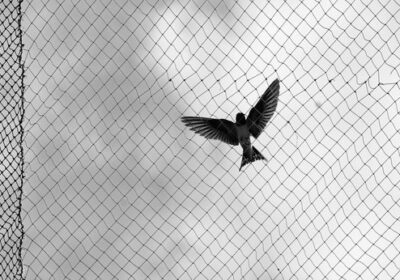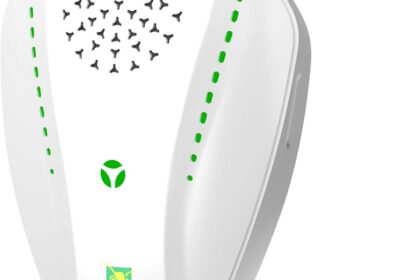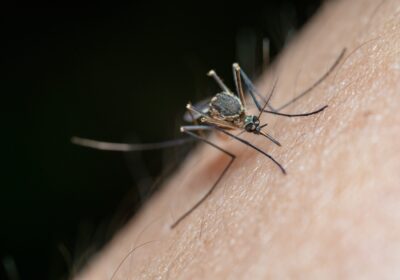Guide to the Most Common Household Pests in New Zealand
You may not be familiar with some of the most common household pests in New Zealand. Fortunately, this guide provides you with a comprehensive overview of some of the most common species.
Aphids
The guide to the most common household pests in New Zealand is an overview of the main insect groups that are commonly found in New Zealand. This includes true bugs, predators, and parasitoids.
True bugs are insects that feed on plants or roots. Some true bugs are predators, while others are parasites. These species tend to congregate on the leaves, stems, and roots of plants. They are found in many different colors, depending on the plant they feed on.
Ciliates are large flying insects that live on plants. Their nymphs feed on sap from the root of the plant. Nymphs remain in the soil for a long time and moult into adults.
There are more than 4,000 types of aphids worldwide. Most aphids feed on the underside of leaves and stems. During warmer months, the numbers of aphids increase quickly. During winter, aphids produce winged aphids, which disperse to other plants to lay eggs.
In New Caledonia, there are over 30 exotic aphid species that have been introduced during the last century. Although most of these species are Oriental, a few Northern Hemisphere aphids can also adapt to the local environment.
In recent years, the introduction rate of exotic aphids in New Zealand has greatly reduced. However, there are still some invasive ants that tend to aphid colonies. Aphid populations can quickly increase and spread diseases.
In order to keep aphids from establishing in New Zealand, it is important to monitor for the presence of natural enemies. Some predatory insects, such as ladybirds, can control aphid populations.
Click beetles
Click beetles are a group of insects that feed on plant material. They are also known as snapping beetles and spring beetles. Most click beetles are about half an inch long.
Several endemic species are found in New Zealand. Among the most interesting are the stag beetle and the giraffe beetle. There are more than four hundred endemic species.
Click beetles are a member of the family Elateridae, which comprises more than 10,000 species worldwide. The largest family in the polyphagan superfamily Elateroidea, they are known for their pro-mesothoracic clicking mechanism. However, the family is still poorly understood. Some of its representatives are known only from fossil specimens.
Click beetles are often found on dead logs. Adults are elongated and bullet-shaped. Their bodies bend forward and they hook their spine into the abdomen notch. When touched, the spine releases, making a “click.”
Wireworms are the larvae of the click beetle. These shiny wireworms grow to about one and a half inches long. They attack roots, bulbs, seeds, and plants. They can overwinter as larvae. Insecticides can control their population.
Other common household pests are weevils. Weevils include the grass grub beetle and the tiger beetle. Both are predators and eat the roots and stems of grass. Grass grub beetles can damage pastures.
Other beetle families with New Zealand representatives are the chafer beetles and the harvestmen. Chafer beetles feed on fruit and flowers.
Earwigs
Earwigs are insects that belong to the class Insecta. They are flat and elongated insects, and have two pairs of wings. These insects are typically found in warm climates. However, they are also common in temperate areas.
Earwigs are nocturnal insects, and tend to hide during the day. They live in dark, moist crevices. At night, they feed on living and dead plant material.
Earwigs are generally 12-24 mm long. Their bodies are flat and reddish-brown. The hind wings are membranous, and the forewings are modified into short, smooth tegmina.
Earwigs are a pest and can cause damage to your plants and vegetables. They often rest under tree bark, stones, and in cracks in foundations. They are also attracted to rotting plant material, and will eat anything they can find in or around your home.
They aren’t poisonous, and they do not bite humans. However, they can pinch the skin, and they can leave small bruises.
They can enter your home by crawling through holes, or by snagging onto your books, lumber, or other objects. Sealing cracks and openings with mesh, caulking, or boric acid can help prevent earwigs from getting into your home.
Most earwigs are scavengers, and they will eat anything they can find. Some species may even be helpful to control the population of other insects.
European earwigs are one of the most common household pests in New Zealand. The males live in the summer, and the females live through the winter.
Giant weta
One of the most fascinating mascots of New Zealand is the giant weta. This insect has been around for millions of years. Its massive size gives it a huge advantage over predators.
The weta is a member of the Stenopelmatidae family. These insects are also called ground crickets or Jerusalem crickets in North America. They are classified into four categories.
There are several endemic species of weta in New Zealand, and many others are found throughout the country. However, the giant weta is by far the largest.
This insect weighs between 20 and 30 grams. In fact, it’s one of the heaviest insects in the world. And while the weta has no aggressive tendencies, it is capable of cannibalism.
There are at least eleven different species of giant weta in New Zealand. Some are found on islands, such as the Cook Strait, while others are only found on the mainland.
These creatures are nocturnal. They live in burrows. They have pheromones that allow them to communicate with each other. Females lay eggs in an underground chamber and brood the hatchlings. A weta is able to survive for up to two years after being born.
A male tusked weta can make a rasping sound by rapidly drawing tusks across one another. Their tusks are also used in territorial fights.
They are common in the wilderness of New Zealand. They can be found in caves and on rocky mountains. They are very good hunters and can take prey from a short distance.
Mole crickets
If you are living in New Zealand and are looking for a guide to the most common household pests in the country, you have come to the right place. Here, we will provide you with information on several common bugs and beetles that are found in the soil and litter of NZ. Depending on your location, you may encounter a few different species of these insects.
Soil and Litter Rove Beetles. This group of beetles has a long flexible abdomen. They are predators and have very short wing covers. In New Zealand, there are 180+ species of this beetle family.
The tawny mole cricket, introduced in the United States, is larger than the southern mole cricket. Both insects are brown, have three pairs of legs, and a set of antennae.
There are many endemic beetle species in New Zealand. In fact, there are 600. Some are predators, others feed on roots. These insects live under driftwood, on sandy beaches, and in decomposing plant material.
During warm spells, mole crickets are active. These insects are known to damage multiple crop species. They have a chirp noise and are attracted to lights at night.
They can also be found in the garden. Their larvae, or nymphs, look similar to the adult mole crickets. After a couple months, these nymphs can reach a quarter of an inch in length.
Mole crickets can be treated with insecticides. The active ingredients include bifenthrin, deltamethrin, imidacloprid, and carbaryl. It is important to read the product labels to make sure that it will be effective against the specific pest.
Cicadas
Cicadas are insects that belong to the order Hemiptera. There are around 40 native species of cicadas in New Zealand. Some have a lifespan of up to five years, while others are only found in tropical climates.
The larvae of cicadas burrow underground and live for a long time. They have a life cycle that varies from 13 to 17 years. After the nymph molts into an adult, the cicada spends a couple months hibernating.
During the spring, nymphs emerge from the ground and climb trees. These young cicada larvae feed on sap from tree roots.
When the nymphs reach the fifth instar, they begin to molt. Eventually, they re-enter the soil and remain there for several years. In the summer, cicadas are visible.
Cicadas are nocturnal and primarily fly at night. Although they are not poisonous, they are a pest that can damage plants. To prevent them from causing problems, cover grapevine trunks with aluminum foil. You can also cover branches with cheesecloth to keep the nymphs from climbing.
There are two types of cicadas: periodical and proto-periodic. Periodical cicadas have a life cycle that lasts between 13 and 17 years.
Unlike other insects, cicadas have no stings. However, they can cause severe stomach upset.
Many predators, such as birds and fish, eat them. Despite the danger, cicadas don’t appear to be afraid of humans. Even cats and dogs seem to love eating them.
Snails and Slugs
Snails and slugs are a nocturnal menace to gardens in the warm months, feasting on tender leaves and shoots from many types of plants. Their favourite food is a mix of vegetables, including lettuce, but they also like to eat flowers, with annuals like pansies and violas among their favourites.
Slugs and snails are generally hermaphrodites – mollusks that possess both male and female reproductive organs – but they only lay eggs after mating with another individual of the same species. The eggs are usually spherical or oval and may be translucent, greyish-brown or gelatinous in appearance.
Adult brown garden snails can lay 50 to 100 eggs a time, while some slugs can lay up to 40 a time. Snails reach maturity in about 2 years, whereas some slugs mature in 3 to 6 months.
These pests live in damp and protected areas where they can shelter from the elements, including under loose bark of rotting logs and under leaf litter in forests and grasslands. They can also be found hiding under stones, rotting timber, old boards and piles of debris in and around our gardens and farmlands.
They often leave behind a characteristic silvery slimy trail during night-time foraging, which helps you find their hiding spots. Removing slug nests made from wood, mulch and weeds can help keep these pests at bay.
Snails and slugs tend to stay in gardens and lawns that receive regular watering, as they like the moisture and nutrients they provide. They can be deterred by removing these hiding spots, using drip irrigation instead of overhead watering, and planting drought-resistant plants that require less water. Scattering pellets, applying snail gel or using natural deterrents can also help.
Cabbage Moth and Cabbage White Butterfly
Brassicas are a popular family of vegetables for gardeners, and there’s no wonder: they offer a range of delicious dishes from kale to cauliflower. Unfortunately, they’re also the favourite food of a few of our pests.
Cabbage moths (Plutella xylostella) and cabbage white butterflies (Pieris rapae) are two of the top brassica-loving insects that plague our gardens, vegetable patches and farms. The moths are a serious problem in urban gardens, while the butterfly can be found on vegetable farms across the country.
The cabbage moth lays large clutches of eggs, often up to 350 at a time, on the underside of leaves and these eggs hatch into hungry larvae within a week. These first instar larvae feed on the edges of leaves before they disperse around the whole plant to complete their feeding journey.
They can cause considerable damage to the plants they eat, destroying young leaves and leaving behind skeletonized foliage with holes and frass. As a result, their damage can reduce the commercial value of an infested crop and may be financially damaging to growers.
Like many of our garden pests, the best way to control them is by detecting them early and getting rid of them before they have a chance to cause any real damage. In addition, ensuring other predators are present in the garden will help keep the cabbage moth and cabbage white butterfly population in check.
Mealybugs
Mealybugs are tiny white insects that are commonly found on houseplants but can also be a problem in greenhouses and outdoors. They are mainly a problem in northern climates but can be found in warmer regions as well.
Mealybugs are an insect pest that can be difficult to control. The main reason for this is that they are covered in a powdery wax that repels water-based pesticides. There are several ways to kill mealybugs, including natural methods and some common household products.
One of the easiest ways to treat a small infestation of mealybugs on your indoor plants is to use isopropyl (rubbing) alcohol. You can find this at your local supermarket or a garden centre.
You should dilute this to around 765% to 70% isopropyl alcohol before dabbing it on the mealybugs with a cotton swab or spraying it with a mist bottle. Be sure to test out the solution on a small area of your plant a day or so before applying it, to ensure that it won’t burn the leaf tissue.
Other methods include using soaps that kill mealybugs and a mixture of neem oil and lemongrass oil that can be used as a foliar spray to help control mealybugs. These are very effective if you catch them early.
Mealybugs can be a serious pest for many varieties of fruit, vegetables and flowers but their presence is particularly a concern in vineyards. They can cause damage to berry crops by sucking the sap out of the fruits and leaving honeydew behind as a byproduct. They can also reduce the health of grapes and affect their ability to store sugar in the leaves before dormancy.
Scale Insects
Scale insects (Hemiptera, suborder Sternorrhyncha) are small, wingless, insect-like pests of many indoor and outdoor herbaceous plants, fruit trees, and shrubs. Some species are specialized to particular hosts, while others may be pests of entire plant groups or crops.
These insects are commonly found on ornamental plants as well as on fruit and nut trees, especially in New Zealand. Infestations are not usually serious, although heavy infestations can cause damage to plants, reducing yield and quality.
There are two main groups of scale insects – soft and armored. The former secrete a waxy covering that cannot be separated from the insect body and are rarely mobile.
The covers help them blend in with the environment and keep their bodies cool. They protect them from predators, and also prevent most contact insecticides from reaching the insect itself.
Some species of soft scales also excrete a sticky substance called honeydew which supports the growth of fungi such as sooty mold. It can foul sidewalks, cars and houses beneath infested trees.
Both armored and soft scales can be kept under control with mechanical controls and natural enemies, such as ladybugs and lacewings. In some cases chemical control is appropriate, especially when infestations are severe and a variety of natural enemies have failed to suppress the pest population.
Aphids
Aphids are small sap-sucking insects that can be a serious threat to your plants. They can stunt plant growth, produce galls, and transmit plant diseases.
They also attack fruit trees, vegetables, and ornamental plants. The damage they cause is usually not permanent and can be remediated by controlling their numbers and using good cultural practices, such as watering.
New Zealand native plants are less susceptible to aphids than imported varieties, but infestations can still be significant and can affect the quality of the crops grown. For example, the Russian wheat aphid is a major pest for wheat. Its toxicity and damage to wheat leaves, buds, and flowers can reduce the yield of the crop.
In addition to feeding on plant sap, aphids also excrete a sugary liquid waste called honeydew. This liquid can build up on leaves and other parts of the plant and, in some cases, form sticky deposits that attract other insects such as ants to feed on it.
Often, honeydew deposits are black and appear on the underside of leaves. The appearance of this sooty mold can be a sign that the aphids have been causing damage to your crops.
It is important to note that aphids can be hard to control, especially with insecticides, so it is important to monitor your plants carefully and apply sprays when they are in their most active stages. The earliest infestations can be difficult to detect, so it is important to inspect new growth, flower buds, stems, and tender shoots.
Fortunately, aphids can be controlled by natural enemies such as predatory ladybugs, hoverfly larvae, parasitic wasps, aphid midge larvae, crab spiders, and entomopathogenic fungi. These are effective pest controls for garden scale applications, but can be a challenge to use on larger farm crops or even in greenhouses.










